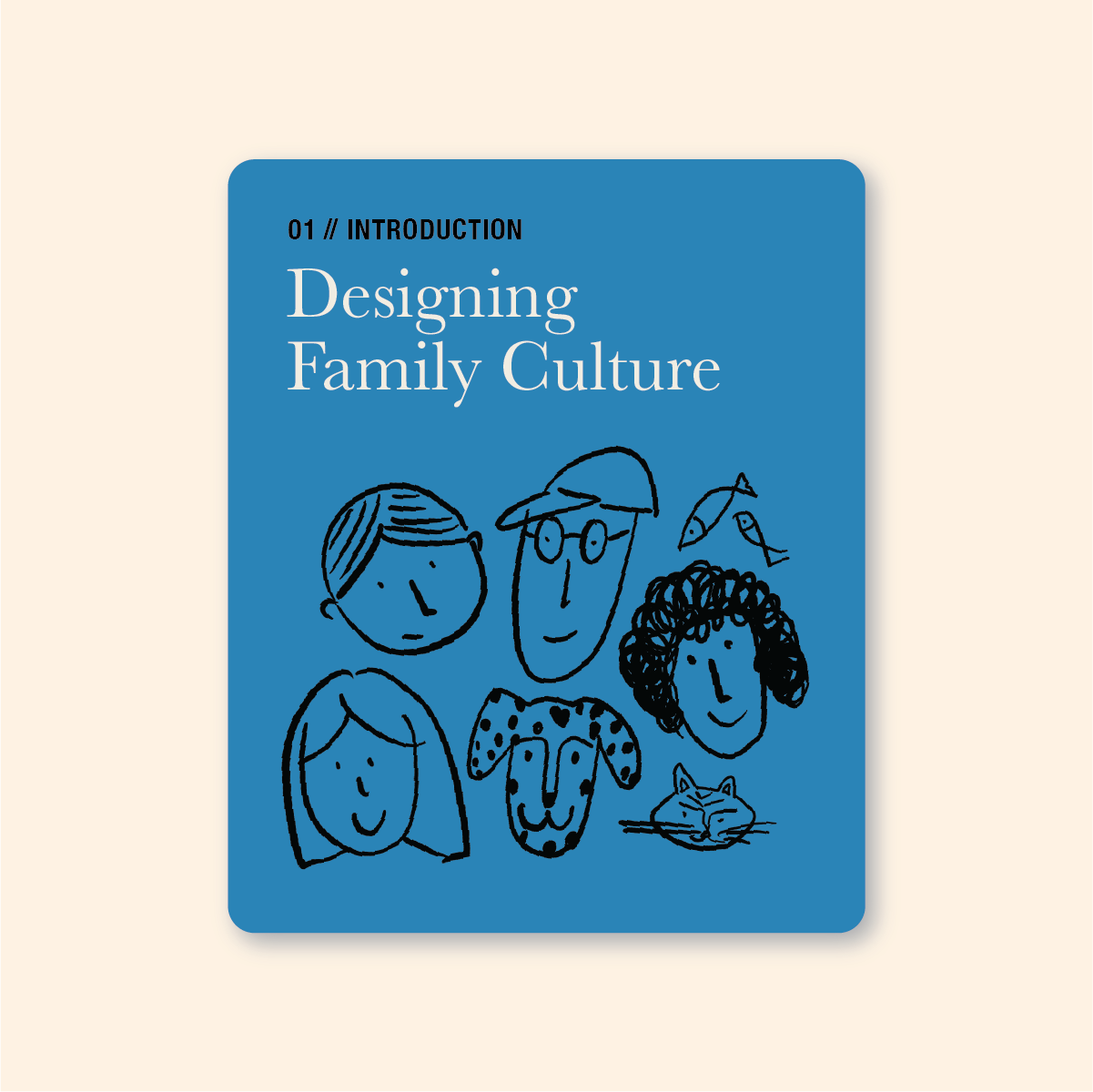The Importance of Designing Family Culture
Culture shapes people, behaviour and thinking everywhere. At home, it's too important to leave to chance if we want strong, connected relationships.
Culture Shapes us Everywhere
Culture is the invisible force that shapes how people live, learn, grow and connect, in society, at work, in communities, and in families.
At work, we design culture to benefit the business. In society, culture is constantly shaped and reshaped by politics, media, voices and movements from the people. But at home, we often leave culture to take shape organically.
Many families are simply trying to survive the daily grind, and operating on survival mode leaves little room for intention. As a result, family culture is often shaped by stress, inherited habits, or external forces like school, peers, and even factors like social media, more than our own values.
Why Family Culture is Worth our Attention
An intentional family culture acts like an invisible guide when life gets messy. It:
Anchors us to connection when we feel overwhelmed
Simplifies decisions & reduces conflict so everyone understands how choices are made and the intent behind them.
Builds belonging so everyone feels safe, seen, heard and valued.
Supports individual and collective growth by helping us live our values, take responsibility, and work towards shared goals.
This is about shaping the environment we live in to reflect our values, support emotional safety and help everyone learn and grow into their own unique selves. It requires parents to do the bulk of the shape-shifting first, and in the process we discover ourselves and together with our children, practice the skills needed to better prepare them for the future.
What Shapes Family Culture, Where to Begin
Just like all the other cultures, family culture is shaped by both invisible and invisible parts. When we start designing it, we don’t need to reinvent the wheel entirely. But we can also simply start by adding to or shaping the pieces that already exists.
People: Each member brings strengths, needs, and constraints. With children, we need to consider development, with adults, life experiences and baggage.
Values: The foundation on what truly matters. Clarify, prioritise and clearly communicate the essence of what we think is important.
Behaviours & Norms: The everyday actions and habits that bring values to life. When we dig deep, we often find our habits don’t fully match the values we want to live.
Environment: The physical and emotional space we create to support our values
Experiences: How family members feel and interact, how we make each other feel
To begin:
notice individual needs
Reflect on what current patterns say about your values
Identify where behaviours align or don’t, with what’s important
Make a small shift, observe and adjust accordingly
That is the essence of a human-centered approach at home. We involve everyone, listen deeply, and bridge values to daily practice. Without this bridge, family values or manifestos risk becoming wish-lists, like a pledge recited without meaning.
Key Takeaways:
Culture shapes people, we can choose to intentionally shape it, or let it take shape organically.
When families run on survival mode, culture is shaped by stress and outside forces.
Designing family culture gives family an anchor, clarity, belonging, and support growth.
We focus on areas within our influence: behaviours, our environment and how we model values.



